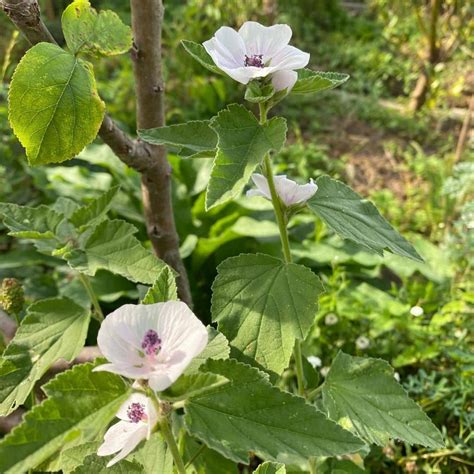Marsh Mallow Guide: History & Uses Explained

The marsh mallow, a sweet and fluffy confection, has been a beloved treat for centuries. With its origins dating back to ancient civilizations, the marsh mallow has undergone significant transformations over the years, evolving from a medicinal remedy to a popular dessert ingredient. In this comprehensive guide, we will delve into the history of marsh mallows, explore their various uses, and provide an in-depth analysis of their cultural significance.
History of Marsh Mallows

The earliest recorded use of marsh mallows dates back to ancient Egypt, where the sap of the marsh mallow plant (Althaea officinalis) was used to create a sweet and soothing confection. The Egyptians would mix the sap with nuts and honey to create a treat that was both delicious and medicinal. The use of marsh mallows as a medicinal remedy continued through the centuries, with the ancient Greeks and Romans using the plant to treat a variety of ailments, including sore throats and coughs.
In the 19th century, the French developed a method for extracting the sap from the marsh mallow plant and whipping it into a fluffy and sweet confection. This marked the beginning of the modern marsh mallow as we know it today. The introduction of gelatin in the late 19th century further transformed the marsh mallow, making it easier to produce and more widely available.
Marsh Mallow Production
Today, marsh mallows are produced using a combination of sugar, corn syrup, and gelatin. The manufacturing process involves whipping the mixture into a fluffy and lightweight confection, which is then cut into various shapes and sizes. Marsh mallows can be found in a range of flavors, from classic vanilla to more unique flavors like strawberry and blue raspberry.
| Marsh Mallow Type | Ingredients | Texture |
|---|---|---|
| Classic Marsh Mallow | Sugar, corn syrup, gelatin | Fluffy and lightweight |
| Mini Marsh Mallow | Sugar, corn syrup, gelatin | Small and bite-sized |
| Giant Marsh Mallow | Sugar, corn syrup, gelatin | Large and fluffy |

Uses of Marsh Mallows

Marsh mallows are a versatile ingredient and can be used in a variety of dishes, from sweet treats like s’mores and Rice Krispie treats to savory dishes like soups and stews. They can also be used as a topping for desserts like hot chocolate and ice cream.
In addition to their culinary uses, marsh mallows have also been used in a range of other applications, including as a beauty treatment and as a ingredient in craft projects. The fluffy and lightweight texture of marsh mallows makes them an ideal ingredient for creating unique and creative crafts, such as marsh mallow sculptures and decorations.
Marsh Mallow Recipes
There are countless recipes that feature marsh mallows as a main ingredient. Some popular recipes include:
- S'mores: a classic campfire treat that consists of a toasted marsh mallow sandwiched between two graham crackers and a piece of chocolate
- Rice Krispie treats: a sweet and crunchy snack made with marsh mallows, cereal, and sugar
- Hot chocolate: a rich and creamy drink made with melted chocolate, milk, and topped with whipped cream and marsh mallows
Cultural Significance of Marsh Mallows
Marsh mallows have become an integral part of many cultures around the world, with their sweet and fluffy texture evoking feelings of nostalgia and warmth. In the United States, marsh mallows are a staple at campfires and outdoor gatherings, where they are used to make s’mores and other sweet treats.
In other cultures, marsh mallows are used in a range of traditional dishes and desserts, such as the Japanese-style dessert known as "marsh mallow tempura," which consists of deep-fried marsh mallows coated in a sweet and sticky sauce.
Marsh Mallow Fun Facts
Here are some fun facts about marsh mallows:
- The world's largest marsh mallow was over 6 feet tall and weighed over 1,000 pounds
- Marsh mallows are a popular ingredient in many beauty treatments, including face masks and hair treatments
- The first marsh mallow-based dessert was created in ancient Egypt, where the sap of the marsh mallow plant was used to make a sweet and soothing confection
What is the history of marsh mallows?
+The history of marsh mallows dates back to ancient civilizations, where the sap of the marsh mallow plant was used to create a sweet and soothing confection. The modern marsh mallow as we know it today was developed in the 19th century, with the introduction of gelatin and other ingredients.
What are some uses of marsh mallows?
+Marsh mallows are a versatile ingredient and can be used in a variety of dishes, from sweet treats like s’mores and Rice Krispie treats to savory dishes like soups and stews. They can also be used as a topping for desserts like hot chocolate and ice cream.
What is the cultural significance of marsh mallows?
+Marsh mallows have become an integral part of many cultures around the world, with their sweet and fluffy texture evoking feelings of nostalgia and warmth. In the United States, marsh mallows are a staple at campfires and outdoor gatherings, where they are used to make s’mores and other sweet treats.


